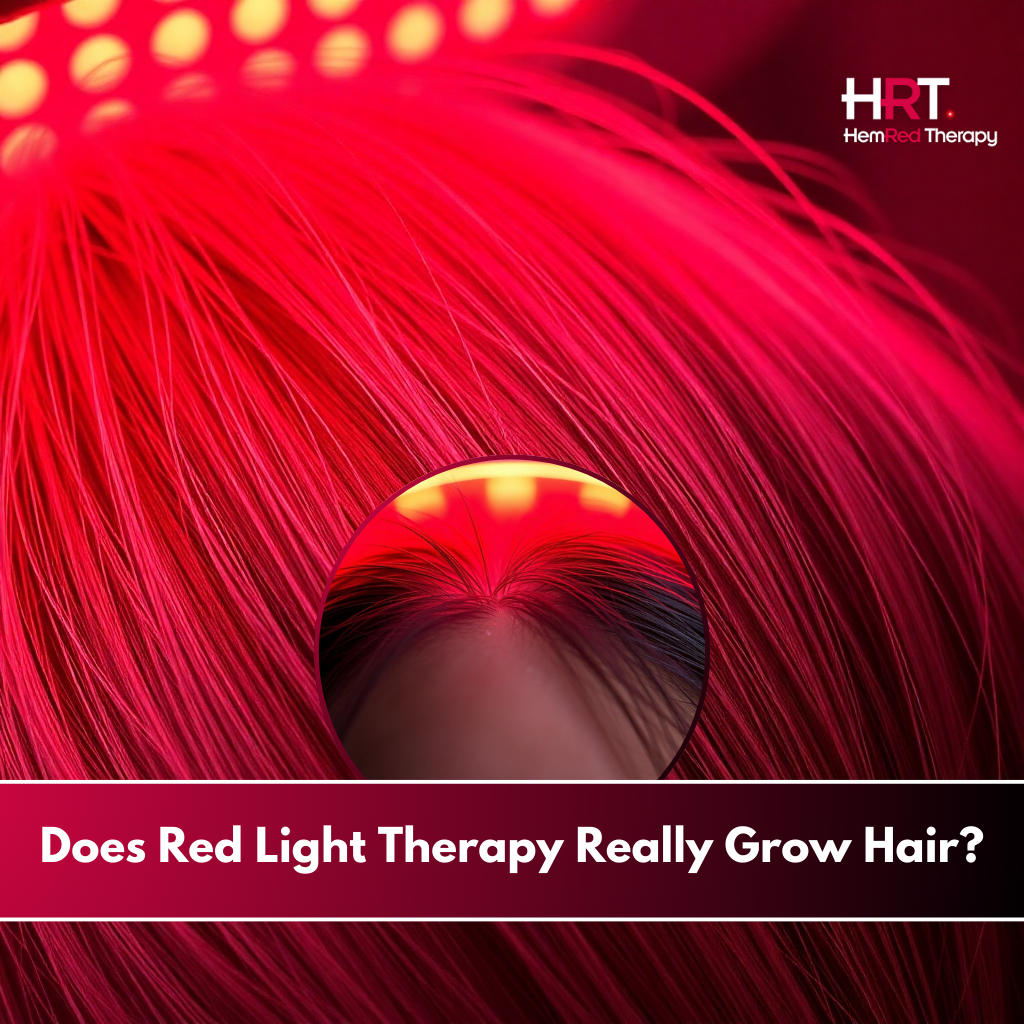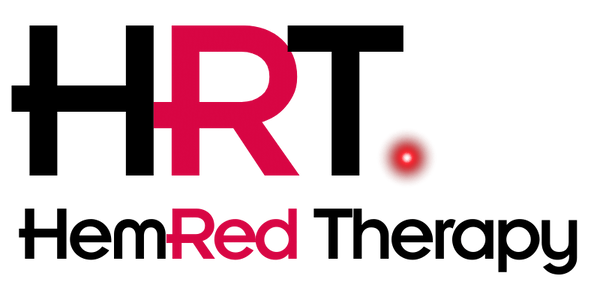
Using Red Light Therapy for Hair Growth: Does Red Light Therapy Really Grow Hair? What the Research Really Says
Discover how red light therapy can support healthier hair, backed by credible research. Learn why the HemRed Therapy™ PureLight 225 panel is the best red light therapy panel for hair growth and how it can naturally support thicker, fuller locks.
Is Red Light Therapy a Treatment For Hair Loss?
If you’ve ever searched for a non-invasive, natural hair loss treatment using red light therapy, you’ve probably heard a lot of hype—and possibly a lot of confusion. As more people explore low-level light therapy for thinning hair, it’s become essential to cut through the buzz and focus on the genuine science behind it. Let's see, in this article, how red light therapy (RLT) may help stimulate hair growth, reference the studies that support its use, and explain why the HemRed Therapy™ PureLight 225 panel could be your next step toward a healthier head of hair.
What Is Red Light Therapy (RLT)?
Red light therapy, sometimes referred to as low-level laser therapy (LLLT) or photobiomodulation, involves exposing the skin to specific red and near-infrared (NIR) wavelengths of light (commonly in the 630–850 nm range). While scientists are still uncovering the full range of its benefits, existing research suggests that these wavelengths can support cellular function and tissue repair. This is because red and near-infrared light can penetrate the scalp’s surface and interact with the cells inside hair follicles, potentially helping to optimize energy production, reduce inflammation, and improve overall hair follicle health.
How Can Red Light Therapy Help with Hair Growth?
-
Boosting Cellular Energy
Hair follicles are metabolically active, so they need plenty of energy to support hair shaft production. Red light therapy helps stimulate mitochondria, the “powerhouses” inside cells, to produce more adenosine triphosphate (ATP). This boost in cellular energy may encourage hair follicles to stay in the anagen (growth) phase longer, potentially reducing shedding and increasing hair thickness. -
Reducing Scalp Inflammation
Inflammation around hair follicles can lead to hair thinning. Red light’s anti-inflammatory properties may help soothe the scalp and create a healthier environment for hair growth. -
Improving Blood Flow
Proper blood circulation ensures that hair follicles receive the nutrients and oxygen they need. Some studies suggest that red light therapy can help promote microcirculation in the scalp, aiding in delivering these essential nutrients directly to the follicles.
What Does the Research Say About Red Light Therapy and Hair Loss?
A growing body of research is shining light on the potential of red light therapy for hair loss:
- A 2013 review in Seminars in Cutaneous Medicine and Surgery concluded that low-level laser therapy can significantly improve hair growth in both men and women with pattern baldness.
- A 2014 randomized, double-blind trial published in Lasers in Surgery and Medicine showed that participants using LLLT experienced increased hair density compared to a control group.
- Ongoing studies indicate that consistent use of red and near-infrared wavelengths (often around 650–850 nm) is crucial for achieving optimal results for hair regrowth.
These results vary from person to person, and it’s important to note that red light therapy is not a “miracle cure.” However, the mounting evidence does suggest that incorporating red light therapy can be a valuable part of a holistic approach to addressing thinning hair.
Why Choose the HemRed Therapy™ PureLight 225 Panel
When you’re serious about exploring natural hair loss treatment using red light therapy, you need a device that delivers consistent power and optimal wavelengths. This is where the HemRed Therapy PureLight 225 panel stands out:
-
Clinically Proven Wavelengths
The PureLight 225 panel emits red (660 nm) and near-infrared (850 nm) light—wavelengths commonly referenced in scientific studies for supporting hair growth. -
High-Power Output
Its 225 LEDs ensure that you’re getting enough light energy to penetrate the scalp effectively and reach your hair follicles. -
Even Coverage
Designed to provide a broad treatment area, the PureLight 225 panel is excellent for anyone looking to address a larger region of thinning hair rather than focusing on one small spot. -
Quality Construction
HemRed Therapy prioritizes durability and user-friendly design. You can trust that your investment will last, giving you consistent results over time.
How to Use Red Light Therapy for Hair Growth at Home
-
Position the Panel
Place the HemRed Therapy PureLight 225 panel about 6–12 inches from your scalp. The panel hanger included with the panel makes the experience even better, allowing for hands-free sessions. -
Set Your Session Time
Many people find that 10–20 minutes per session, 3–5 times a week, can be effective. The ebook "The Ultimate Guidebook to RED LIGHT THERAPY, Simple protocols, Powered by Science!" included for free with the panelm gives the most accurate advice. -
Stay Consistent
Like going to the gym, you can’t expect overnight results. Hair growth cycles typically last a few months, so commit to regular sessions to see real changes. -
Combine with Healthy Habits
Red light therapy is most effective when paired with a balanced diet, stress management, and proper hair care. Consider supplementing with essential nutrients like biotin, vitamin D, and zinc if recommended by your healthcare provider.
Frequently Asked Questions (FAQ)
-
Is Red Light Therapy Safe for Everyone?
Generally, red light therapy is considered safe and non-invasive, with minimal side effects. However, if you have a specific medical condition or concerns, consult your healthcare professional before starting any new therapy. -
When Will I See Results?
Results vary, but most people notice improvements in hair thickness and reduced shedding after 2–3 months of consistent use. You will start seeing baby hair after ~5 months of consistent use. -
Can I Use Red Light Therapy with Other Hair Loss Treatments?
Absolutely. It’s often used alongside medications like minoxidil or finasteride. Combining therapies can potentially enhance results, but always consult your doctor for personalized advice.
Should I Really go for RLT for my Hair?
If you’re exploring a non-invasive red light therapy device for hair regrowth, the evidence is quite promising, though not miraculous. Consistency is key, and pairing red light therapy with a well-rounded approach to scalp health can greatly enhance your chances of success.
Ready to take a proactive step toward fuller, healthier hair? The HemRed Therapy™ PureLight 225 panel is designed to deliver the best red light therapy panel for hair growth right in the comfort of your home.
Experience the Power of Red Light Therapy for Yourself!
Click here to learn more and purchase the HemRed Therapy™ PureLight 225 panel now.
Investing in your hair health can pay off in confidence, self-esteem, and overall well-being. With the HemRed Therapy PureLight 225 panel by your side, you’ll have a reliable tool to help you on your journey to stronger, thicker hair—backed by real research, no hype needed.
References
- Avci P, Gupta GK, Clark J, Wikonkal N, Hamblin MR. Low-level laser (light) therapy (LLLT) in skin: stimulating, healing, restoring. Semin Cutan Med Surg. 2013;32(1):41-52.
- Lanzafame RJ, Blanche RR, Bodian AB, et al. The growth of human scalp hair mediated by visible red light laser and LED sources in males. Lasers Surg Med. 2014;46(8):601-607.
- Ryu HH, Kim DW, Kim SS, et al. Comparative evaluation of 3 different low-level light therapy devices for enhancing hair growth in both men and women with androgenetic alopecia: A 24-week, randomized, double-blind, sham device-controlled multicenter trial. Lasers Surg Med. 2019;51(10):841-847.
Disclaimer: This article is for informational purposes only and is not intended to replace professional medical advice, diagnosis, or treatment. Always consult with a qualified healthcare provider for personalized recommendations.
